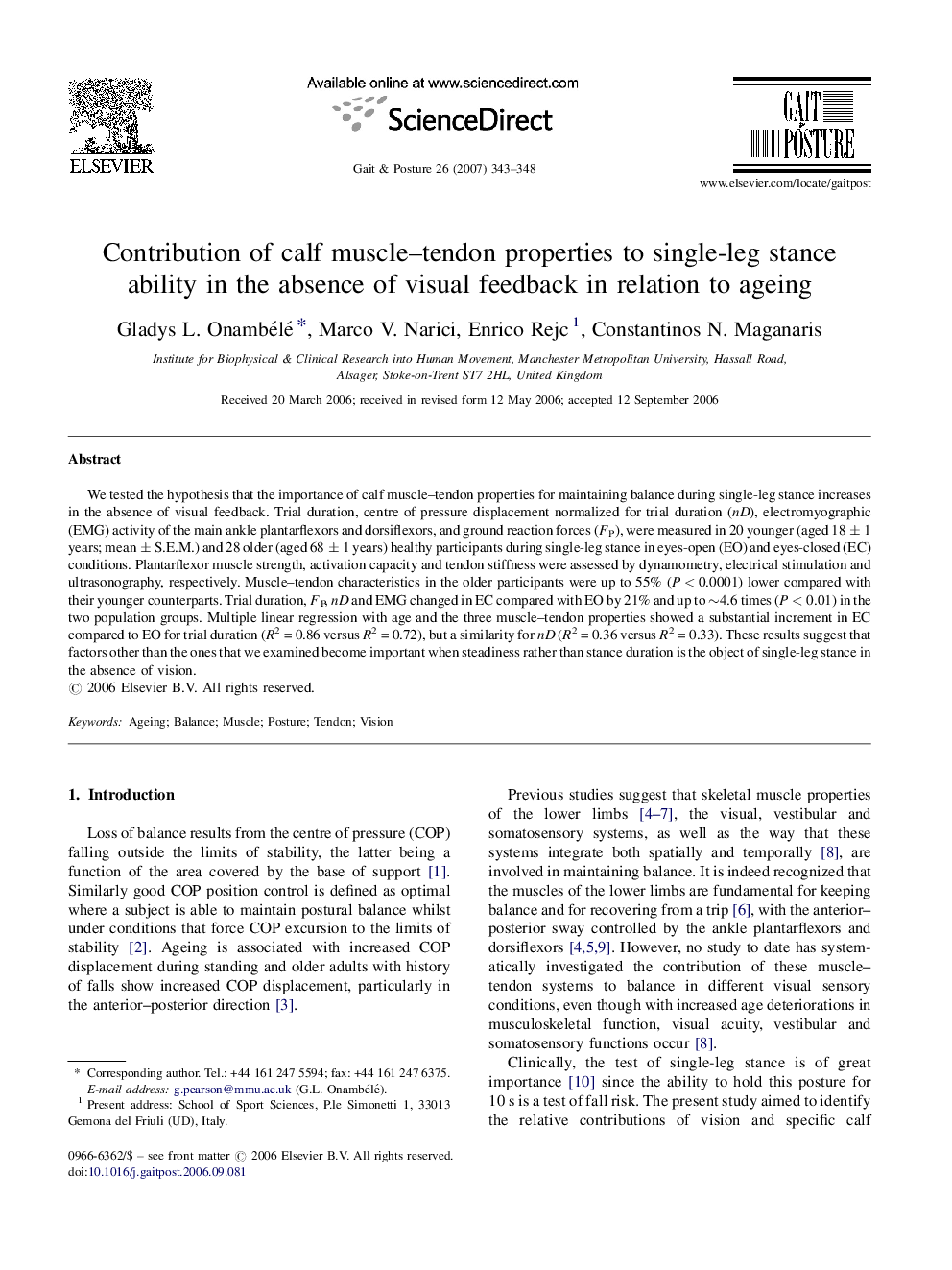| Article ID | Journal | Published Year | Pages | File Type |
|---|---|---|---|---|
| 4057854 | Gait & Posture | 2007 | 6 Pages |
We tested the hypothesis that the importance of calf muscle–tendon properties for maintaining balance during single-leg stance increases in the absence of visual feedback. Trial duration, centre of pressure displacement normalized for trial duration (nD), electromyographic (EMG) activity of the main ankle plantarflexors and dorsiflexors, and ground reaction forces (FP), were measured in 20 younger (aged 18 ± 1 years; mean ± S.E.M.) and 28 older (aged 68 ± 1 years) healthy participants during single-leg stance in eyes-open (EO) and eyes-closed (EC) conditions. Plantarflexor muscle strength, activation capacity and tendon stiffness were assessed by dynamometry, electrical stimulation and ultrasonography, respectively. Muscle–tendon characteristics in the older participants were up to 55% (P < 0.0001) lower compared with their younger counterparts. Trial duration, FP, nD and EMG changed in EC compared with EO by 21% and up to ∼4.6 times (P < 0.01) in the two population groups. Multiple linear regression with age and the three muscle–tendon properties showed a substantial increment in EC compared to EO for trial duration (R2 = 0.86 versus R2 = 0.72), but a similarity for nD (R2 = 0.36 versus R2 = 0.33). These results suggest that factors other than the ones that we examined become important when steadiness rather than stance duration is the object of single-leg stance in the absence of vision.
